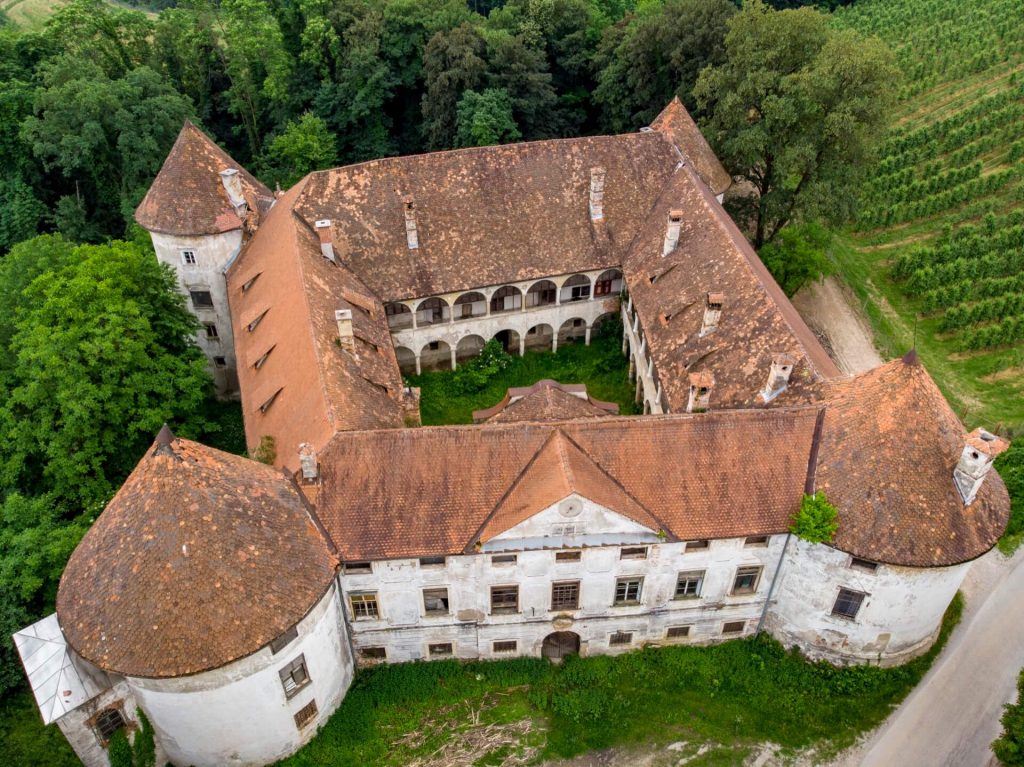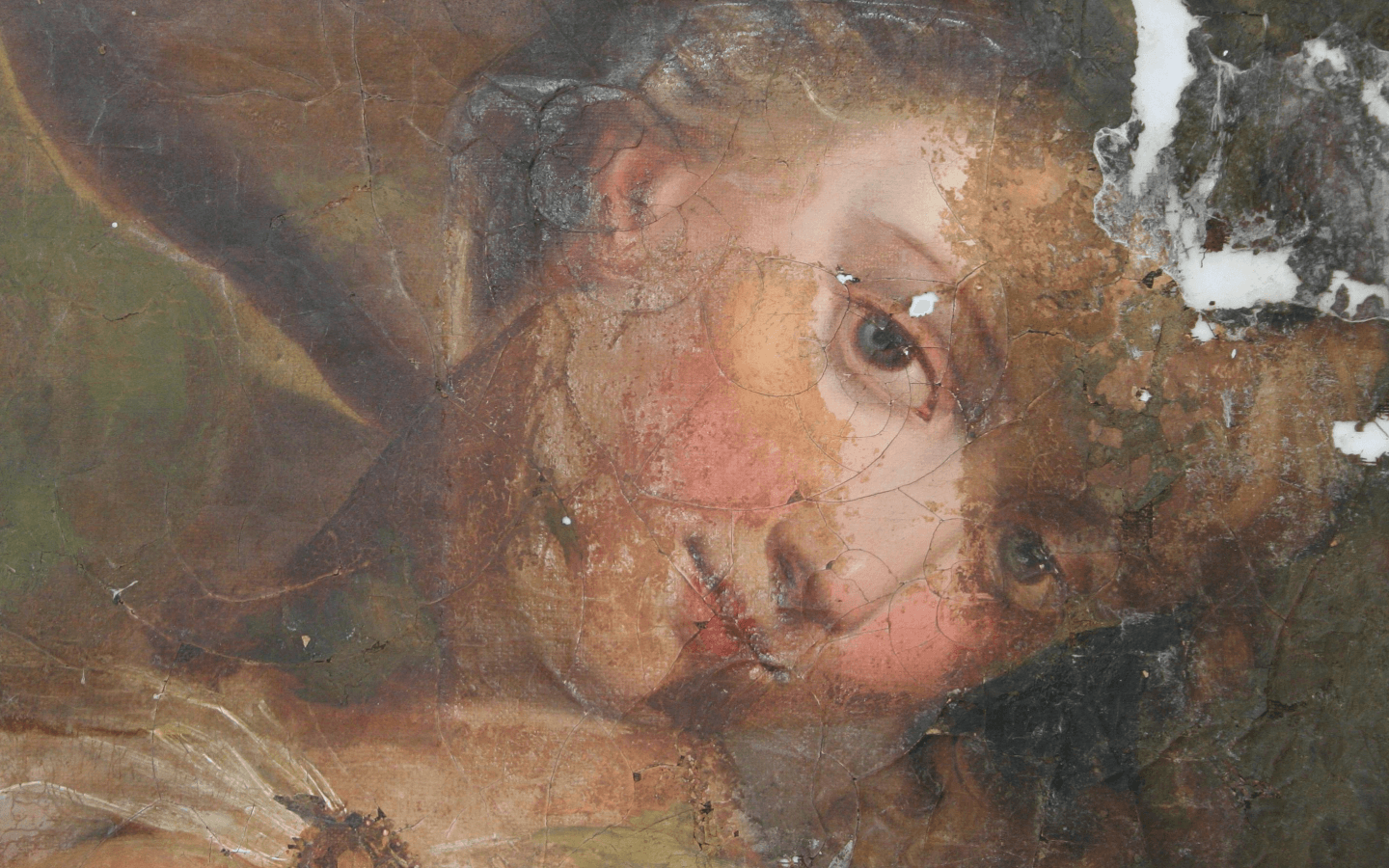We have kept to the principle of minimum intervention, so we have not reconstructed the missing parts.
Text. Špela Govže


The stone pillar marker, also known as the Pintar's Cross, stood until 2021 on the property of Srževica 21a, NW of the village between the local road and the forest. As the sign was becoming increasingly dilapidated and the owner did not have the means to conserve it, it was agreed to donate it to the Municipality of Šentjur. The municipality's representative contacted the ZVKDS Restoration Centre, Stone and Stucco Department, where the sign was conserved as part of their regular activities. In the future, it is planned to redevelop the area of the original site and to erect a copy of the sign. The sign is composed of two types of stone: white marble, which is used for most of the elements: the pillar, the corrugated roof, the cross, and micritic limestone, which was easier to work and is used for the carved house with reliefs and the moulded element underneath. Of the three reliefs, the Crucifixion is the best preserved, while the other two are in poorer condition. The initials O.I. and the date 1726 are carved on the pillar. In 2021, scaffolding was erected around the sign, and the sign was dismantled and transported to the restoration studio with the help of a mobile crane. The marker had strong black and green deposits, which were mainly of biological origin. The surface of the stone was completely burnt through in some areas and the reliefs, particularly on one side, had been destroyed beyond recognition. The stone showed various mechanical damages such as cracks, chipping, flaking and dusting. We carried out cleaning probes, which were complex and had to be adapted to the condition of the monument. The intervention included cleaning with toothbrushes, steam cleaning and various small tools. For more stubborn deposits, we used dedicated stone cleaners, biocides and ion exchange resins. Locally, we also tried laser removal in the most at-risk areas. On the marble in particular, not all the deposits could be removed as we did not want to damage the original stone substance. But the difference after a long cleaning is enormous. Given the poor condition of the relief house and the moulded element, it was necessary to consolidate and grout the deviating scales. The grouting was carried out with grouting compounds Ledan Ristat extra and TC1 plus, and curing with 20% calcium acetoacetate solution (CFWHardening was carried out over a longer period of time, with the most fragile parts being partially hardened before cleaning. The damage was sealed with a mortar made of natural hydraulic lime and yellow sand. On the marble, the damage was significantly less, where the damage was filled with white sand mortar. The principle of minimum intervention was followed, so missing parts were not reconstructed. In order to slow down the degradation process, in agreement with the local community, the municipality, the parish priest and the responsible conservator of the ZVKDS OE Celje, Matija Plevnik, we installed the sign under the choir of the parish church in Ponikva, close to the original location. The reinforced concrete foundation was made by a local contractor, following the instructions of the conservationists. The location of the foundation was agreed at a previous meeting of all the stakeholders involved. The elements were transported to the church by a truck with a lifting arm. The erection was carried out using the conventional method of erecting the scaffolding and the pulley. The joints between the elements were filled with a mortar made of natural hydraulic lime and calcite sand.


















